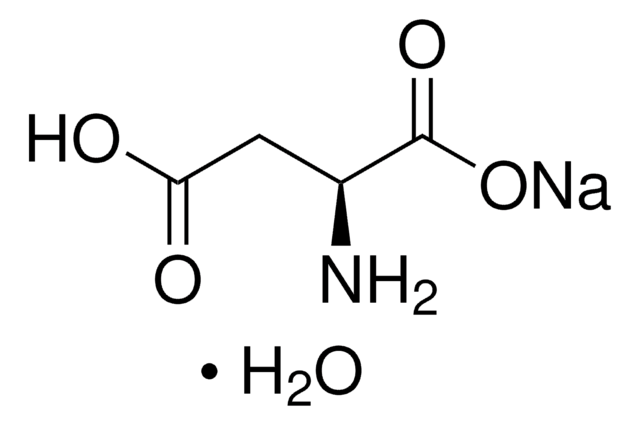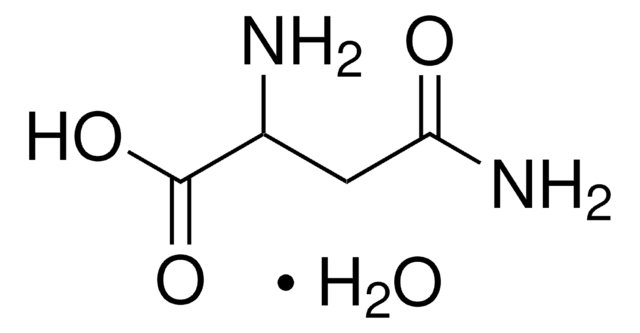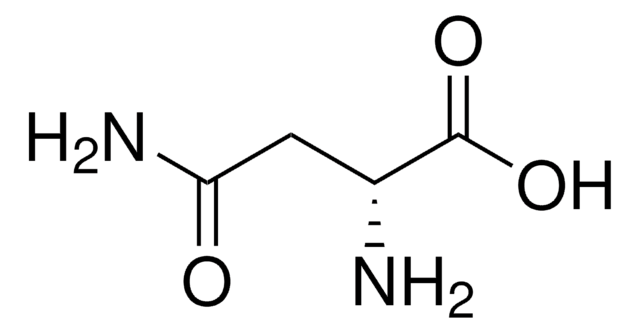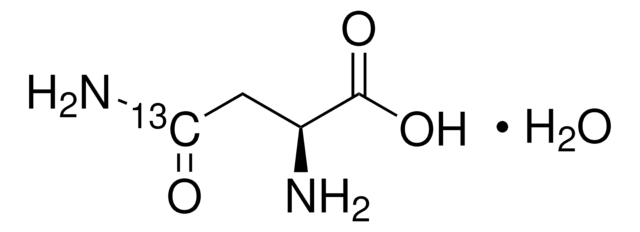A8381
L-asparagine monohydrate
≥99% (TLC)
Synonyme(s) :
4-Amide d'acide (S)-2-aminosuccinamique, 4-Amide d'acide L-aspartique, Acide (S)-(+)-2-aminosuccinamique
About This Item
Produits recommandés
Nom du produit
L-asparagine monohydrate, ≥99% (TLC)
Source biologique
synthetic
Niveau de qualité
Essai
≥99% (TLC)
Forme
powder
Couleur
white to off-white
Pf
233-235 °C (lit.)
Application(s)
cell analysis
peptide synthesis
Chaîne SMILES
[H]O[H].N[C@@H](CC(N)=O)C(O)=O
InChI
1S/C4H8N2O3.H2O/c5-2(4(8)9)1-3(6)7;/h2H,1,5H2,(H2,6,7)(H,8,9);1H2/t2-;/m0./s1
Clé InChI
RBMGJIZCEWRQES-DKWTVANSSA-N
Vous recherchez des produits similaires ? Visite Guide de comparaison des produits
Description générale
Application
- as a component of Sauton′s and chelated Sauton′s media for mycobacterial growth
- to test its effect in the induction of Ca2+ flux in rice roots using aequorin luminescence imaging
- as a component of fermentation medium for the Blakeslea trispora spores
Actions biochimiques/physiologiques
Code de la classe de stockage
11 - Combustible Solids
Classe de danger pour l'eau (WGK)
WGK 1
Point d'éclair (°F)
Not applicable
Point d'éclair (°C)
Not applicable
Équipement de protection individuelle
Eyeshields, Gloves, type N95 (US)
Faites votre choix parmi les versions les plus récentes :
Déjà en possession de ce produit ?
Retrouvez la documentation relative aux produits que vous avez récemment achetés dans la Bibliothèque de documents.
Les clients ont également consulté
Notre équipe de scientifiques dispose d'une expérience dans tous les secteurs de la recherche, notamment en sciences de la vie, science des matériaux, synthèse chimique, chromatographie, analyse et dans de nombreux autres domaines..
Contacter notre Service technique









